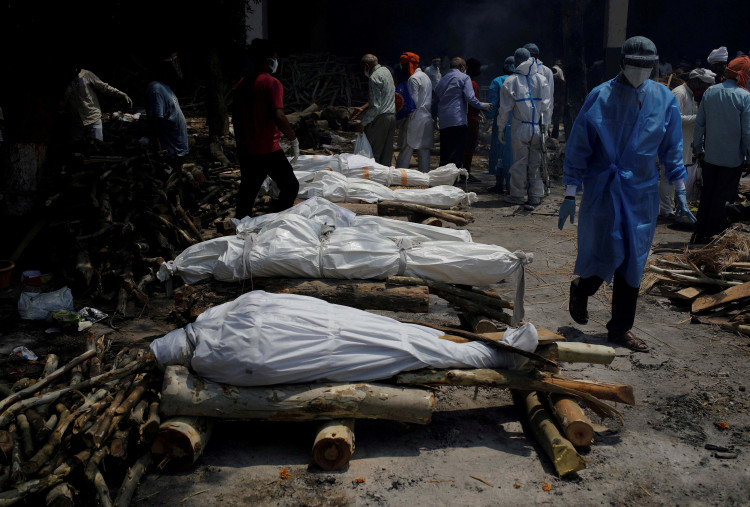Hospitals and crematoriums across India are foregoing religious rites and customs as the sheer number of pandemic deaths pushes the country's health system to the brink of collapse.
"The virus is swallowing our city's people like a monster," crematorium employee Mamtesh Sharma said in Bhopal.
Individual rites for every corpse, as is customary in Hindu traditions, has been disregarded entirely in many crematoriums. "We are just burning bodies as they arrive," Sharma said. "It is as if we are in the middle of a war."
The Indian Health Ministry reported another 2,767 COVID-related deaths on Sunday, bringing the country's death toll to 192,311 along with more than 17 million infections, according to government records.
But this is likely a small fraction of the total number of fatalities wrought by the pandemic in India.
The situation is so dire, sick people are dying in the streets and outside hospitals with many succumbing to preventable breathing issues that are now a death sentence given India's oxygen shortage.
Government officials have denied any problems with medical supplies. "Nobody in the country has been left without oxygen," Indian solicitor general Tushar Mehta said on Saturday.
But even stretchers and other basic medical equipment are getting harder to come by, making the sight of health workers dragging corpses along the ground a common occurrence.
"The hospital is now in a 'beg-and-borrow' mode," the representative for Sir Ganga Ram hospital in New Delhi said. "It is an extreme crisis situation."
Indian Prime Minister Narendra Modi spoke with American President Joe Biden oTuesday about emergency measures.
"We discussed the evolving COVID-19 situation in both countries in detail," Modi wrote in a tweet where he also thanked Biden for his continued support.
Other countries have also expressed their concern over India's worsening situation. Britain sent 100 ventilators and 95 oxygen concentrators in a shipment which arrived in Delhi Tuesday, while France is preparing a load of oxygen generators that will provide a year's supply of oxygen for 250 beds once installed.






